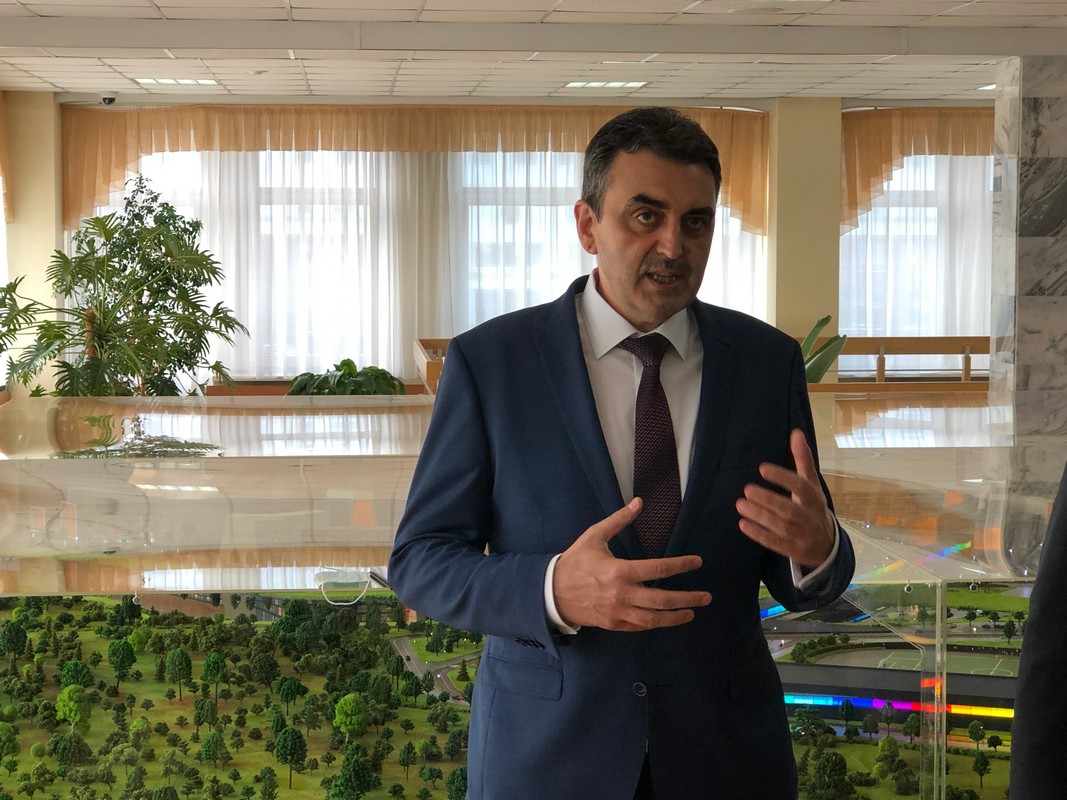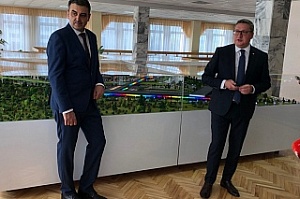TSU Rector Eduard Galazhinskiy and Andrey Antonov, deputy governor of the Tomsk Oblast for Economics, spoke about special features of a new inter-university campus on the left bank of Tom River and explained how the concept will be finalized.
The idea of the inter-university campus for Tomsk Big University was born in 2019 during the St. Petersburg International Economic Forum. The construction work is scheduled to begin in the summer of 2022.
“The task now is to create an interdisciplinary, inter-university campus or, to be more precise, an environment where talents are created and developed, with various startups and new technologies,” Andrey Antonov explained.
The latest concept of the project and its visualization were presented to the general public during Prime Minister Mishustin’s recent visit. It is the third installment that takes into account all the suggestions from students and university teachers. One of them was the idea of traveling the campus without going outside, especially relevant for Siberian winters. In response, this version of the project has a heated passage.
“We had various ideas: from installing a reactor to smart greenhouses or connecting the architecture to the wooden architecture of Tomsk. Now we have the most interesting ideas visualized: a landscape park, a riverbank, places for doing yoga, an open-air stage, pavilions for outdoor events and an ice-skating rink, and a ski trail for winter. Most of the campus is going to be free of cars, you can travel on foot, or by bicycle or scooter or Segway. We plan to have a system of sharing services for these kinds of transport to make them more available for students and townsfolk. It is also environmentally friendly,” said TSU Rector Eduard Galazhinskiy.
A space of 52 hectares will house 10 thousand students (30 thousand prospectively) and will have its own sports center and multifunctional educational center. The latter project is being discussed with the administration, Tomsk universities and research institutions, and partner tech companies.
“Along with research laboratories, the campus will also provide scientific entertainment. Some of them will combine entertainment and research. For example, an immersive cinema – a hall that allows demonstrating 360-degree videos can work as a planetarium or show virtual reality videos, but it is also helpful with research work. It can be used for 3D-modeling and creating virtual reality,” Eduard Galazhinskiy added.
It is vital to note that the campus will be open for citizens of Tomsk. The living area will be located further into the heart of campus, and the multifunctional educational center, the sports center, and parks will be located closer to the cableway. The road from the center of town to the campus will only take 6-8 minutes. The citizens will have access to a swimming pool, food courts, co-working spaces, and some of the laboratories and training grounds.
“For example, students needed a place to safely practice drone flights, and we included a drone training ground in the project. It will be available for all, both scientists and amateurs can conduct experimental flights there. It is a continuation of the idea that Tomsk is a city that learns. A century and a half ago the University brought new technologies here: gas, electricity, running water. In the same fashion, this campus should become the entry point for new technologies: drones, internet-of-things, data mining, and cybersecurity systems,” Eduard Galazhinskiy concluded.


